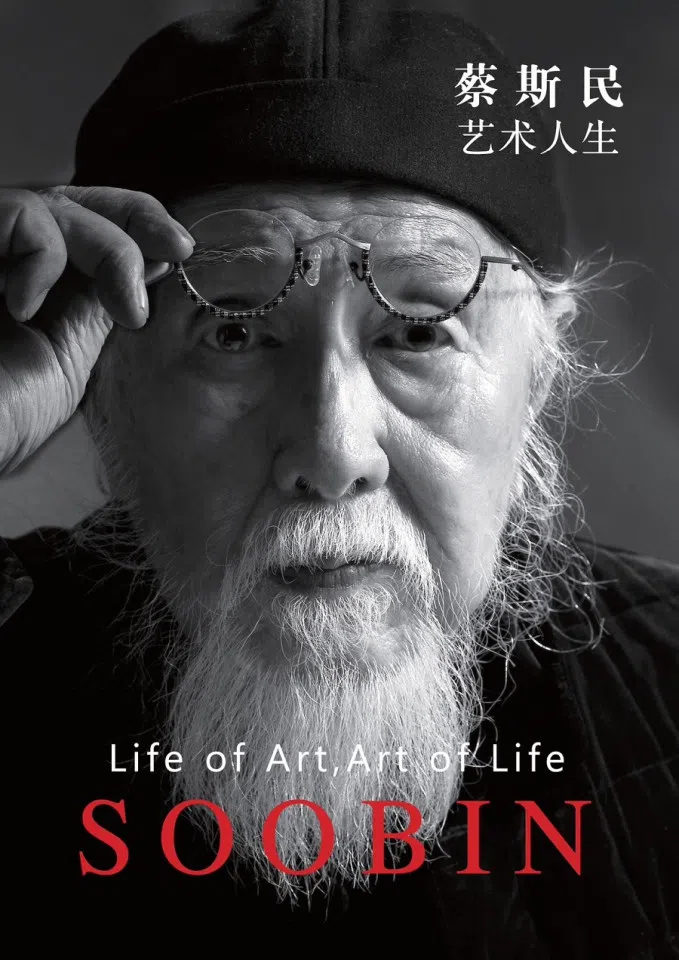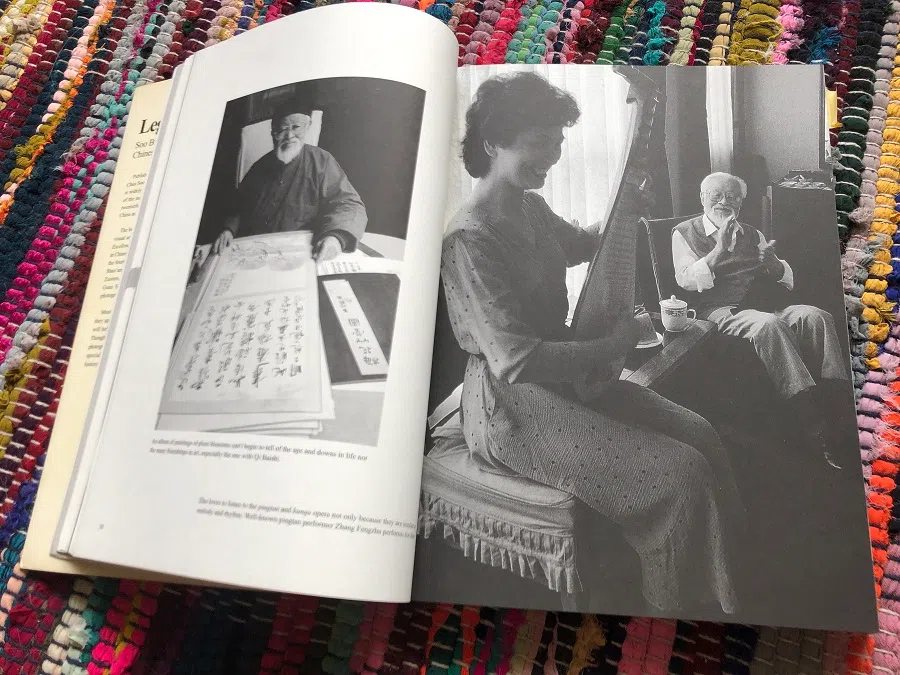The significance of Singaporean photographer Chua Soo Bin's work
Teo Han Wue tells us more about the life and work of Singapore's veteran photographer, Chua Soo Bin, who took striking profile shots of leading Greater China artists and went on to make fellow Singapore artists the subject of his portraiture.

When asked in a recent talk about how he managed to strike a balance between pursuing art and making a living, Singapore's veteran photographer Chua Soo Bin, 90, answered that he didn't care.
Because if he had thought too much about that, his artistic career as highlighted in the talk as well as the main event "Soo Bin: Life of Art, Art of Life", an exhibition now on at Chapel Gallery, Objectifs from 14 January to 26 March to celebrate his 90th birthday, would not have been possible. A commemorative book of the same title documenting his remarkable journey was also launched at the opening of the exhibition last month.

Back in the 1970s and 1980s, Chua Soo Bin was enjoying great success as a commercial photographer known for his outstanding, award-winning advertising work. Once while on assignment in China, he noticed a dearth of good images of leading artists whose names were particularly familiar even to many outside China.
He set out to publish a book featuring 14 top Chinese ink painters aged 80 and above, who were still alive and active in mainland China, Taiwan, Hong Kong, Singapore and the US in 1984.
Capturing the zeitgeist
To find more enduring meaning in his career, he turned his attention to photographing iconic Chinese masters after taking a decision to embark on an ambitious project, which has now come to define him as a significant photographic artist in the region. He set out to publish a book featuring 14 top Chinese ink painters aged 80 and above, who were still alive and active in mainland China, Taiwan, Hong Kong, Singapore and the US in 1984.
The following years saw Soo Bin whole-heartedly dedicated to the project making nine trips to China, four to Hong Kong, twice to Taiwan and several times to the US and Europe, all at his own expense, photographing as well as arranging various details for the book.

Soo Bin's labour of love culminated in a massive 300-page pictorial tome in Chinese - Liuzhen: Portraits of Excellence - which was launched with an exhibition at the National Museum Art Gallery in 1989 officiated by the then Minister for Trade and Industry BG Lee Hsien Loong.
The critical success of the book and the exhibition, all of which Soo Bin had funded entirely himself, more than made up for its lack of financial gains. The images and the book generated so much interest in the region that they found their way to various cities in China and Taiwan.
Soon Soo Bin, with this collection of images, was becoming a much celebrated legend not only in the story of Singapore's art but also on the art scene in China where the images toured extensively. The book Portraits of Excellence had in time sold out and went out of print with demand for it steadily growing.
With the republication, the book significantly shifted its focus from the ink masters featured to the photographer being the creator of the portraits.
Creating legends
This led Soo Bin to decide to republish the book in two separate editions in Chinese and English in 2006. With the republication, the book significantly shifted its focus from the ink masters featured to the photographer being the creator of the portraits.
More importantly, it appeared for the first time in English as a stand-alone edition under a new title Legends: Soo Bin's Portraits of Chinese Ink Masters. The word "legends" was chosen because it comes closest to the original Chinese title liuzhen (留真) suggesting that while the painters have become legends, so have the photographer and his images.


I collaborated with Soo Bin as the editor of this new set of books, especially on all the texts and captions in the English-language edition. From then on the Legends project seemed to have launched into a new phase with a fresh round of tours beginning with its exhibition as part of the Singapore Season in Shanghai in 2007. It then went to the Zhejiang Art Museum in Hangzhou in 2011 the year after the museum featured Ansel Adam, an American photographer, for the first time.
More recently Legends went on exhibition in Long Museum in Shanghai and in National Gallery Singapore respectively in 2019.
With all that happening around Legends, it is only too easy to forget that Soo Bin has at the same time done as much if not more for a great number of other artists in Singapore as well as China. For example, he took on the task of photographing 60 artists for a book called Singapore Artists Speak in 1990.

His brilliant images of the artists, unfortunately only got to play second fiddle because the book published by artist Thomas Yeo focused more on their works instead. For some reason, these images never found their way to any major exhibition as Soo Bin intended until recently.
Meanwhile, Soo Bin went on to photograph many Singapore artists other than those in the book such as Wu Tsai Yen, Lee Wen and Chng Seok Tin. After he started his gallery SooBin Art Int'l in 1990, he put his photographic skills to good use by taking photographs of artists for catalogues in his exhibitions. They included Chinese artists such as Wu Guanzhong, Hsiung Ping-ming, Zhou Sicong, Zhou Chunya and Mao Tongqiang.


A contribution to the art of portraiture
Just what is the significance of Soo Bin's work as a Singapore photographer?
I once tried to stress its importance to a highly influential guest from Singapore at the opening of a Legends exhibition in China saying that there should be a Singapore version of the book and exhibition. I was completely surprised by his reply : "But there won't be a market for it!"
One wishes we had more photographers like him.

Notwithstanding its artistic and historical value, the conventional pragmatic view is that such a venture would only be worthwhile if it was financially profitable. But I was disappointed that someone whose view could have held sway on how things might go in Singapore actually failed to see the point in Soo Bin's work. I was hoping he should have been so inspired by the suggestion that he would readily affirm such an undertaking and better still offer help to make it happen.
Maybe it's true that photographers might not find practising their art commercially viable in Singapore. That's why apart from Soo Bin one can hardly think of any other photographer who has made portraits of important artists among us to be featured in an exhibition or a book. One wishes we had more photographers like him. One would also wish that Soo Bin could have extended his range beyond visual artists to include writers, dancers, actors and musicians as many world-renowned photographers have done.

In this regard let me just mention two of those who made portraits of great artists of their times: French Henri Cartier-Bresson (1908 -2004) for his memorable images of luminaries such as Samuel Beckett, Henri Matisse, Albert Camus, Jean-Paul Sartre and Alberto Giacometti; Canadian Yousuf Karsh (1908-2002) for his unforgettable pictures of George Bernard Shaw, Earnest Hemingway, Leonard Bernstein, Pablo Casals, Martha Graham, Georgia O'Keeffe and Pablo Picasso.
Wouldn't such indelible iconic images make us feel impoverished in comparison? Perhaps our arts institutions such as the National Arts Council or the National Gallery Singapore could take the lead and initiate such worthwhile photography projects for us.

Since our photographers do portraiture in their practice anyway, they should probably take a cue from Soo Bin and show off their flair by making images of not only visual artists but also creative individuals from other fields such as theatre, dance, literature and music.





